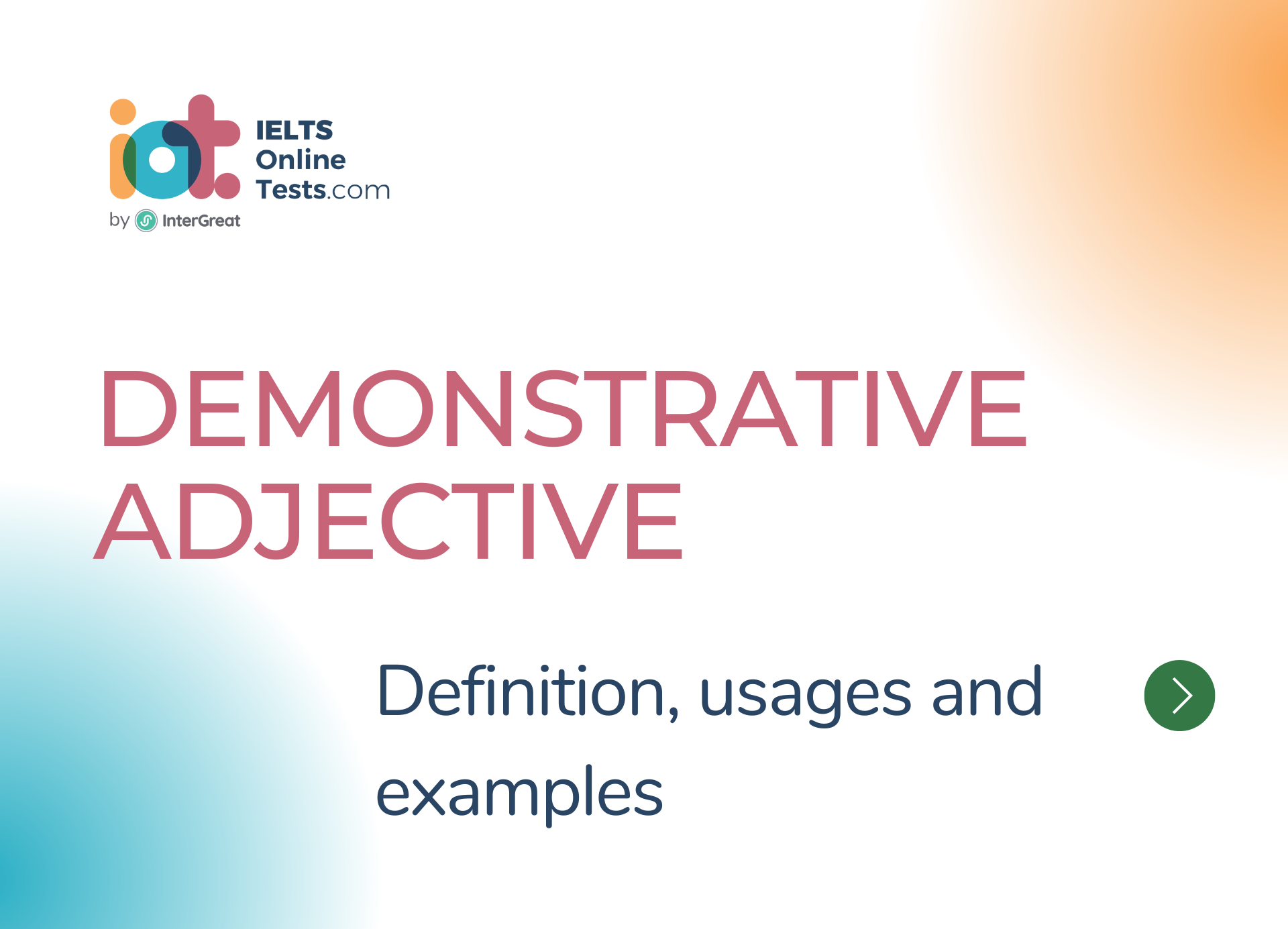
Demonstrative Adjective definition, usages and examples
Demonstrative adjectives are used to point out or identify specific nouns or pronouns. They indicate the proximity of the noun to the speaker or the listener.
Here are some key points about demonstrative adjectives:
Definition: Demonstrative adjectives are words that modify nouns by pointing out or identifying them. They indicate the relative position of the noun in relation to the speaker or the listener.
Demonstrative Adjective Forms: The four main demonstrative adjectives are "this," "that," "these," and "those."
Proximity: "This" and "these" are used to refer to nouns that are close to the speaker or the speaker's current location.
- Example:
- "This book is interesting,"
- "These flowers are beautiful."
- Example:
Distance: "That" and "those" are used to refer to nouns that are farther away from the speaker or the speaker's location.
- Example:
- "That car is expensive,"
- "Those birds are flying high."
- Example:
Placement: Demonstrative adjectives are placed before the noun they modify.
- Example:
- "This house,"
- "That cat,"
- "These apples,"
- "Those shoes."
- Example:
Singular vs. Plural: "This" is used with singular nouns, while "these" is used with plural nouns. Similarly, "that" is used with singular nouns, and "those" is used with plural nouns.
Specificity: Demonstrative adjectives help to specify or point out a particular noun in a given context.
- Example:
- "Give me that pen,"
- "I like these cookies."
- Example:
Distinction from Pronouns: Demonstrative adjectives should not be confused with demonstrative pronouns, which are used to replace nouns.
- Example (demonstrative adjective):
- "This is my book."
- Example (demonstrative pronoun):
- "This is mine."
- Example (demonstrative adjective):
Demonstrative adjectives play a crucial role in identifying and pointing out specific nouns. They help to add clarity and precision to our speech and writing by indicating the proximity of the noun in relation to the speaker or the listener. By using demonstrative adjectives appropriately, we can effectively communicate and refer to specific objects or entities.




